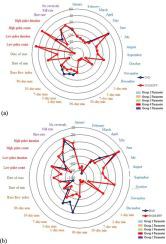Journal of Hydrology ( IF 5.9 ) Pub Date : 2021-04-24 , DOI: 10.1016/j.jhydrol.2021.126368 Hojjat Mianabadi , Simin Alioghli , Saeid Morid

|
The international legal principle of ‘no-harm’, as a customary international law, lies at the heart of numerous international transboundary water conventions, rules, and agreements. The current study identifies and examines the three most common categories of harm, namely health, environmental, and economic, in an integrated framework. Exploitation of the Kamal Khan dam over the Hirmand/Helmand Transboundary River internationally shared between Iran and Afghanistan has been selected as a case study. For this aim, an integrated modeling approach that links Soil and Water Assessment Tool (SWAT), Indicators of Hydrologic Alteration (IHA), dust storm events (DST) and crop production is developed to simulate the indicators and their parameters under historical conditions and future exploitation of the dam. Effects on the three types of harm are classified as being low, moderate or high. The results showed that the effects of the dam diversion for economic harm would be high. For instance, it could reduce the wheat production of the Iranian side of Sistan plain up to 70%. The hydrological alteration of the river is also significant, up to 80% during the winter and spring months. This can result in health and environmental harms. The region’s health and environment are already in a critical situation mainly due to the drying of Hamoun wetlands, which rely on the inflows of the Helmand River and are the major sources of dust storms. Notably, these issues would affect the entire plain in both Iran and Afghanistan. The scope of this study was the principle of ‘no-harm’ but the methodology with some additional modifications could be considered for other principles like “equitable and reasonable utilization” in transboundary river basins.
中文翻译:

赫尔曼德河流域国际跨界水法中“无害”规则的定量评估
作为习惯国际法的“无害”国际法律原则是众多国际跨界水公约,规则和协议的核心。本研究在一个综合框架内确定并审查了三种最常见的危害类别,即健康,环境和经济。案例研究选择了在国际上由伊朗和阿富汗共享的希尔曼德/赫尔曼德跨界河上的Kamal Khan大坝的开发。为此,开发了一种综合建模方法,该方法将土壤和水评估工具(SWAT),水文变化指标(IHA),沙尘暴事件(DST)和农作物生产联系起来,以在历史条件和未来条件下模拟指标及其参数。大坝的开采。对三种伤害的影响分为低,中或高三种。结果表明,大坝导流对经济损害的影响将很高。例如,它可能使锡斯坦平原的伊朗一侧的小麦产量减少多达70%。河流的水文变化也很显着,在冬季和春季月份高达80%。这可能会危害健康和环境。该地区的健康和环境已经处于危急状况,这主要是由于哈蒙湿地的干燥,该湿地依赖于赫尔曼德河的流入,是沙尘暴的主要来源。显然,这些问题将影响伊朗和阿富汗的整个平原。









































 京公网安备 11010802027423号
京公网安备 11010802027423号